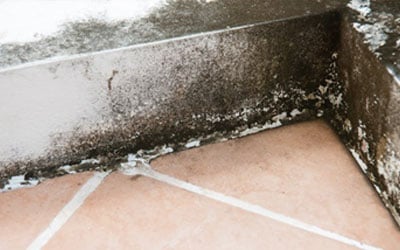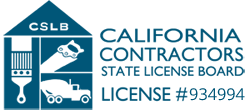
Mold growth in residential and commercial properties is a widespread issue that can pose significant concerns for property owners and occupants alike. Mold can be harmful to both the indoor air quality and the structural integrity of your property, potentially leading to health issues such as respiratory problems, headaches, and allergies. In addition, mold damage can be detrimental to the resale value of your property and can be costly if not addressed promptly.
As a property owner or administrator, it’s vital to have a clear understanding of the threat mold poses, the processes involved in mold remediation, and the importance of working with trusted professionals to restore your property to a healthy state.
In this comprehensive guide, we will delve into the ins and outs of mold remediation, exploring crucial topics such as why mold growth occurs, how to identify its presence within your property, the potential health risks associated with mold exposure, and the steps required to deal with mold issues effectively. Furthermore, we will discuss the essential factors to consider when selecting a professional mold remediation provider, as well as valuable preventive measures you can implement to keep your property mold-free.
Understanding the Causes of Mold Growth
To address mold issues effectively, it is essential to understand the factors that contribute to its growth. Mold is a type of fungus that thrives in damp, humid, and warm environments. The most common causes of mold growth in residential and commercial properties include:
- Water leaks: Plumbing leaks, roof damage, and foundation cracks can introduce excess moisture into your property, providing the ideal conditions for mold growth.
- Poor ventilation: Insufficient air circulation can lead to the buildup of humidity within enclosed spaces, creating a favorable environment for mold development.
- Flooding: Whether from severe weather or burst pipes, flooding can introduce significant amounts of moisture, causing mold to multiply rapidly.
Identifying Mold Issues in Your Property
Mold can often remain hidden, making its detection difficult. Some of the key signs of mold growth include:
- Visual indicators: Look for discolored surfaces, mold stains, and fuzzy, black, green, or white patches.
- Odors: Mold typically produces a musty, unpleasant smell, which can serve as a warning signal for hidden growth.
- Health symptoms: If you or occupants are experiencing persistent allergic reactions or respiratory issues, it could indicate mold presence within your property.
Potential Health Risks of Mold Exposure
Exposure to mold can have various health consequences, particularly for those with allergies, asthma, or weakened immune systems. Common health issues associated with mold exposure include:
- Respiratory problems: Mold spores can irritate the lungs, causing symptoms such as coughing, wheezing, and difficulty breathing.
- Allergic reactions: Mold exposure can trigger allergic responses, including sneezing, nasal congestion, skin rash, and irritated eyes.
- Aggravation of asthma: Mold can worsen the symptoms of asthmatics and increase the risk of asthma attacks.
Essential Steps for Effective Mold Remediation
Addressing mold issues in your property requires a systematic approach, involving a combination of moisture control, mold removal, and preventive measures. Key steps in effective mold remediation include:
- Assessment: Conduct a thorough inspection of your property, identifying affected areas, and determining the extent of damage.
- Moisture control: Identify and address the sources of moisture causing mold growth, such as leaks, flooding, or humidity issues.
- Mold removal: Remove mold-contaminated materials and clean affected surfaces using appropriate techniques, products, and precautions.
- Drying: Ensure affected areas are completely dry to prevent mold regrowth.
- Preventive measures: Implement strategies to minimize the risk of mold reoccurrence, such as proper ventilation, regular maintenance, and moisture monitoring.
Selecting a Professional Mold Remediation Provider
When faced with severe mold issues, it is advisable to seek the help of professional mold remediation services. To choose the most suitable provider, consider the following factors:
- Experience: Select a company with extensive experience in handling mold remediation projects for properties similar to yours.
- Certification and training: Verify that the company holds relevant certifications and their technicians undergo proper mold remediation training.
- Insurance and guarantees: Choose a provider with appropriate insurance coverage, and ask about satisfaction guarantees or warranties for their services.
Preventive Measures for a Mold-Free Property
Keeping your property mold-free involves establishing and maintaining a dry, well-ventilated environment. Below are preventive measures to minimize the risk of mold growth:
- Regular maintenance: Routinely inspect your property for signs of moisture, leaks, and mold, making necessary repairs as needed.
- Ventilation: Implement proper air circulation through the use of exhaust fans, air conditioning, and dehumidifiers.
- Moisture monitoring: Regularly track humidity levels in your property, aiming to maintain an indoor humidity level below 60%.
Empower Yourself with Knowledge for a Mold-Free Property
Mold remediation is a vital aspect of property management that requires knowledge, vigilance, and proactive measures. By understanding the causes of mold growth, recognizing signs of mold presence, and addressing issues swiftly and appropriately, you can considerably reduce the risk of mold-related damage and health hazards.
Furthermore, partnering with Restoration Masters can ensure the prompt and effective resolution of mold problems, helping you maintain a healthy and secure environment for your property’s occupants. Contact us today for mold remediation in Torrance, CA!





